In the realm of pest control, a fascinating advancement has taken place with the emergence of pheromones. These chemical substances, emitted by certain organisms, play a vital role in communication and attraction within the insect world. However, their potential in modern pest control has gained attention for their ability to effectively lure, trap, and monitor unwanted pests. This article will delve into the fascinating realm of pheromones and explore how their use is revolutionizing the field of pest control, ensuring a harmonious coexistence between humans and the insect kingdom.
I. What are Pheromones?
A. Definition
Pheromones are chemical substances that are produced and released by organisms, including insects and animals, to communicate with others of the same species. These chemical signals can convey various messages, such as attraction, warning of danger, marking territory, or guiding other individuals towards food sources. Pheromones play a crucial role in the behavior and social interactions of many living beings.
B. Types of Pheromones
There are different types of pheromones based on their functions and the messages they communicate. Some common types of pheromones include:
-
Sex Pheromones: These pheromones attract or signal the presence of potential mates.
-
Aggregation Pheromones: Released by several individuals to attract others of the same species, often to join a group or gather in a specific location.
-
Alarm Pheromones: Released when an individual is threatened or under attack, warning others of potential danger.
-
Trail Pheromones: Secreted to mark a trail, guiding others to a food source or to find their way back to the nest.
-
Territorial Pheromones: Used to mark and defend territory, signaling to others to stay away.
C. How Pheromones Work
Pheromones are detected by specialized receptors located in the antennae or other sensory organs of the target species. When an individual comes into contact with pheromones, these receptors send signals to the brain, triggering specific behavioral responses. This communication system is highly specific, as each species has its own unique set of receptors and pheromones. Pheromones can elicit a wide range of behaviors, including attraction, aggression, mating rituals, and navigation.
II. Pheromones in Pest Control
A. Identifying Pest Patterns
One of the key advantages of using pheromones in pest control is the ability to identify pest patterns. By strategically placing pheromone traps or dispensers, pest control professionals can monitor and track the presence and activity of pests in a particular area. This data helps in understanding the population dynamics and behavior of pests, which is crucial for developing effective control strategies.
B. Monitoring and Trapping
Pheromone traps are designed to attract pests by mimicking the scent of their sex or aggregation pheromones. Once attracted, pests are trapped and unable to reproduce or cause further damage. Monitoring traps can also be used as an early warning system to detect the presence of pests before they infest an area. This early detection allows for timely interventions and more targeted control measures.
C. Disruption and Confusion
Pheromone-based pest control methods can disrupt the communication and mating patterns of pests. By using synthetically produced pheromones, it is possible to confuse male pests, making it difficult for them to locate females for mating. This disruption lowers the reproductive success of the population, resulting in reduced pest populations over time.
D. Mass Trapping
Mass trapping involves the use of large quantities of pheromone traps to capture and remove a significant number of pests from an area. This method is particularly effective for pests that have a highly attractive pheromone, as it allows for the targeted removal of a large portion of the population. Mass trapping can significantly reduce pest numbers and minimize the damage caused by these pests.
E. Attract-and-Kill Strategies
Attract-and-kill strategies involve using pheromones to lure pests into contact with a lethal agent or trap. The pheromones attract the pests, and once they come in contact with the trap or pesticide, they are eliminated. This method is highly specific and environmentally friendly, as it targets only the pest species while minimizing harm to beneficial insects and non-target organisms.
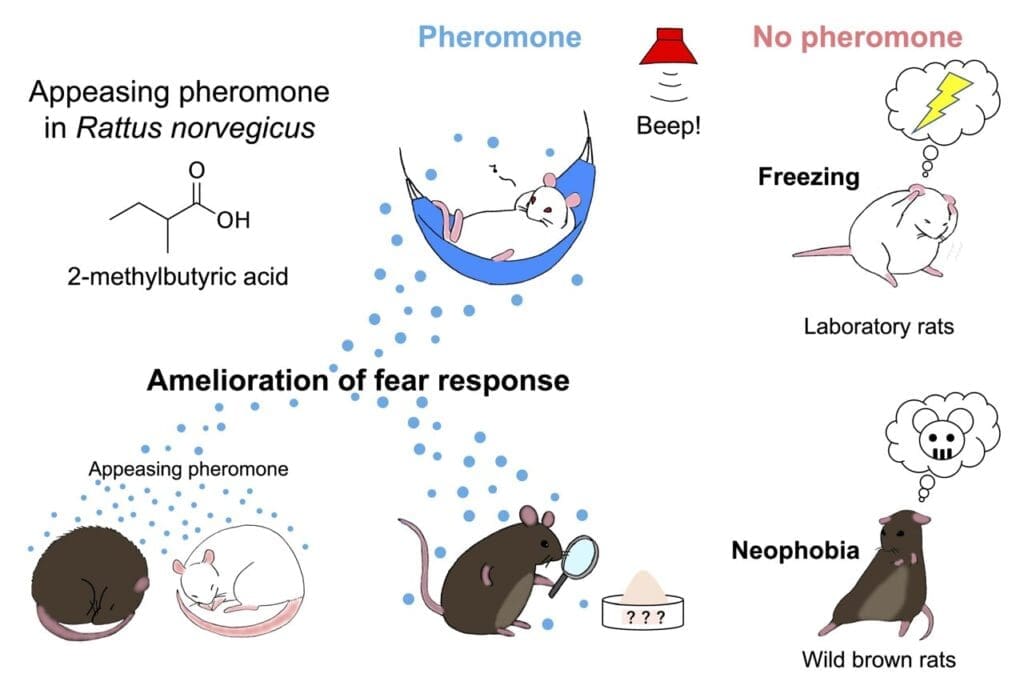
III. Pheromones for Specific Pest Control
A. Ants
Ants use various types of pheromones to communicate and coordinate their activities. Trails pheromones are particularly important, as they guide other ants to food sources or safe paths. Pheromone-based ant control methods involve disrupting these pheromone trails, making it difficult for ants to find food or locate their nest. By using synthetic ant pheromones, it is possible to confuse and disorient ants, reducing their population and preventing infestations.
B. Mosquitoes
Mosquitoes are notorious vectors of diseases, making their control crucial for public health. Pheromones such as carbon dioxide and lactic acid are released by humans and animals, attracting mosquitoes towards potential blood hosts. Pheromone traps and lures can imitate these attractants, luring mosquitoes away from humans and capturing them. This not only reduces the nuisance caused by mosquitoes but also helps in disease prevention.
C. Moths
Moths are pests that can cause significant damage to crops and stored products. By using pheromone traps and lures, it is possible to attract and capture male moths, disrupting their mating and reproductive cycles. This method is particularly effective for species-specific moth control, as the pheromones used are specific to each moth species. Pheromone-based moth control methods have been successfully implemented in the agriculture industry, reducing the reliance on chemical pesticides.
D. Cockroaches
Cockroaches produce aggregation pheromones that attract other individuals to gather in specific areas. By disrupting these aggregation pheromones, it is possible to prevent the formation of large cockroach populations and infestations. Pheromone-based cockroach traps and baits can be used to attract and eliminate cockroaches, creating a more targeted and effective control strategy.
E. Fruit Flies
Fruit flies are a common nuisance in homes, farms, and orchards. Pheromone traps and lures specific to fruit fly species can be used to attract and capture them. These traps and lures mimic the pheromones released by female fruit flies, attracting males and preventing them from mating. By reducing the fruit fly population, crop damage and contamination can be minimized, leading to higher yields and better quality produce.
IV. Pheromone Traps and Devices
A. Pheromone Traps
Pheromone traps are devices designed to attract pests using synthetic versions of their sex or aggregation pheromones. These traps are typically baited with the appropriate pheromone and combined with a sticky surface or a container where pests can be captured. Pheromone traps are highly effective in monitoring pest populations, providing valuable data for pest control strategies.
B. Pheromone Dispensers
Pheromone dispensers are small devices that release pheromones into the environment over a prolonged period. These dispensers can be used to disrupt the mating patterns of pests by saturating an area with synthetic pheromones, confusing and misleading pests in their search for mates. Pheromone dispensers are particularly useful in preventing infestations and controlling pest populations over the long term.
C. Pheromone Spray
Pheromone sprays are formulations that contain synthetic pheromones, allowing for targeted application in specific areas or on specific surfaces. These sprays can be used to disrupt pheromone trails, prevent pests from locating food sources, or create barriers to pest movement. Pheromone sprays are a versatile tool in pest control, providing an environmentally friendly alternative to chemical pesticides.
D. Pheromone Lures
Pheromone lures are devices that release synthetic pheromones to attract and capture pests. These lures can be used in conjunction with traps or other control methods to enhance their effectiveness. Pheromone lures are available for a wide range of pest species and are a valuable tool in integrated pest management programs.
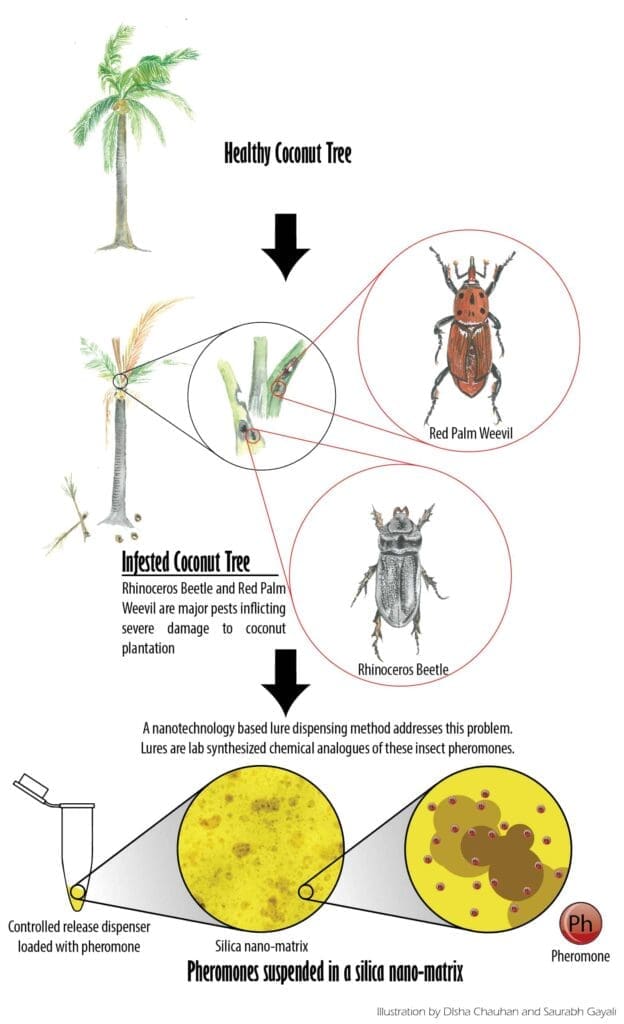
V. Environmental and Health Advantages
A. Reduced Chemical Usage
One of the major advantages of pheromone-based pest control is the reduced reliance on chemical pesticides. By using pheromones to disrupt pest behavior and reproductive cycles, it is possible to lower the need for toxic chemicals. This reduces the environmental impact of pest control and minimizes the potential risks to human health and the ecosystem.
B. Targeted Control
Pheromone-based pest control methods are highly targeted, focusing only on the pest species of interest. This specificity prevents the unnecessary harm or elimination of beneficial insects, wildlife, or non-target organisms. By selectively targeting pests, pheromone-based control methods promote ecological balance and biodiversity.
C. Safe for Humans and Pets
Pheromones used in pest control are generally safe for humans and pets. Unlike chemical pesticides, which can pose health risks if mishandled or misused, pheromones are non-toxic and do not leave harmful residues. This makes pheromone-based pest control methods a safe and sustainable option for residential areas, schools, hospitals, and other sensitive environments.
VI. Pheromone Products for Pest Control
A. Pheromone Pest Control Kits
Pheromone pest control kits are comprehensive packages that contain a combination of traps, lures, dispensers, and other necessary tools for pest control. These kits are designed to target specific pests or provide general-purpose solutions. Pheromone pest control kits are convenient and user-friendly, making them suitable for both homeowners and professionals.
B. Pheromone Traps and Lures
Pheromone traps and lures are available for a wide range of pest species, allowing for targeted control measures. These products are typically sold separately, allowing users to customize their pest control strategies based on the specific pest species encountered. Pheromone traps and lures are effective, easy to use, and provide long-lasting control.
C. Pheromone Sprays
Pheromone sprays are available as ready-to-use formulations or concentrated solutions that can be diluted and applied as needed. These sprays are versatile and can be used in various pest control applications, such as disrupting pheromone trails or creating barriers. Pheromone sprays offer an environmentally friendly alternative to traditional chemical pesticides.
D. Pheromone Dispensers
Pheromone dispensers are available in different forms, including hanging dispensers, adhesive cards, or solid dispensers. These devices release pheromones over an extended period, ensuring continuous disruption of pest behavior. Pheromone dispensers are an effective and convenient option for long-term control and prevention.
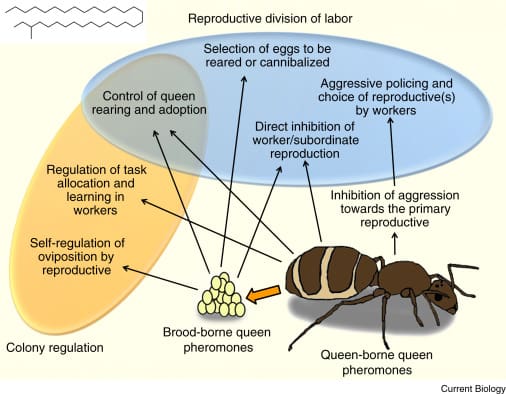
VII. Effectiveness and Success Stories
A. Case Studies
Numerous case studies have demonstrated the effectiveness of pheromone-based pest control methods in various settings. For example, in an agricultural study, the use of pheromone traps and lures successfully reduced pest populations in apple orchards, resulting in higher yields and reduced crop damage. Similarly, in urban settings, pheromone dispersion systems effectively controlled cockroach populations, leading to a significant decrease in infestations.
B. Testimonials from Experts
Experts in the field of pest control have praised the effectiveness and sustainability of pheromone-based pest control methods. Many professionals have reported successful pest management outcomes using pheromone traps, lures, and dispensers. These experts emphasize the importance of integrating pheromone-based methods into comprehensive pest control strategies for long-term, sustainable results.
C. Positive Customer Reviews
Customers who have used pheromone products for pest control have also expressed high satisfaction with their effectiveness. Many have reported significant reductions in pest populations and infestations after incorporating pheromone traps, lures, or sprays into their pest management routines. Positive customer reviews highlight the ease of use, safety, and affordability of pheromone-based pest control solutions.
VIII. Factors Affecting Pheromone Effectiveness
A. Species-Specific Pheromones
Pheromones are highly species-specific, meaning that the pheromones used must accurately mimic those produced by the target pest species. The success of pheromone-based pest control methods relies on the careful selection and formulation of synthetic pheromones to ensure maximum attraction and efficacy.
B. Environmental Factors
Environmental conditions, such as temperature, humidity, and wind direction, can affect the effectiveness of pheromone-based pest control. These factors can influence the distance over which pheromones can be detected and the longevity of their attractiveness. Pest control professionals must consider these environmental factors when designing control strategies.
C. Pest Population Density
The density of the pest population can also impact the effectiveness of pheromone-based control methods. Higher population densities may require more traps or dispensers to achieve desired control levels. Monitoring the population density and adjusting the pheromone deployment accordingly is crucial for maximizing the effectiveness of pheromone-based pest control strategies.
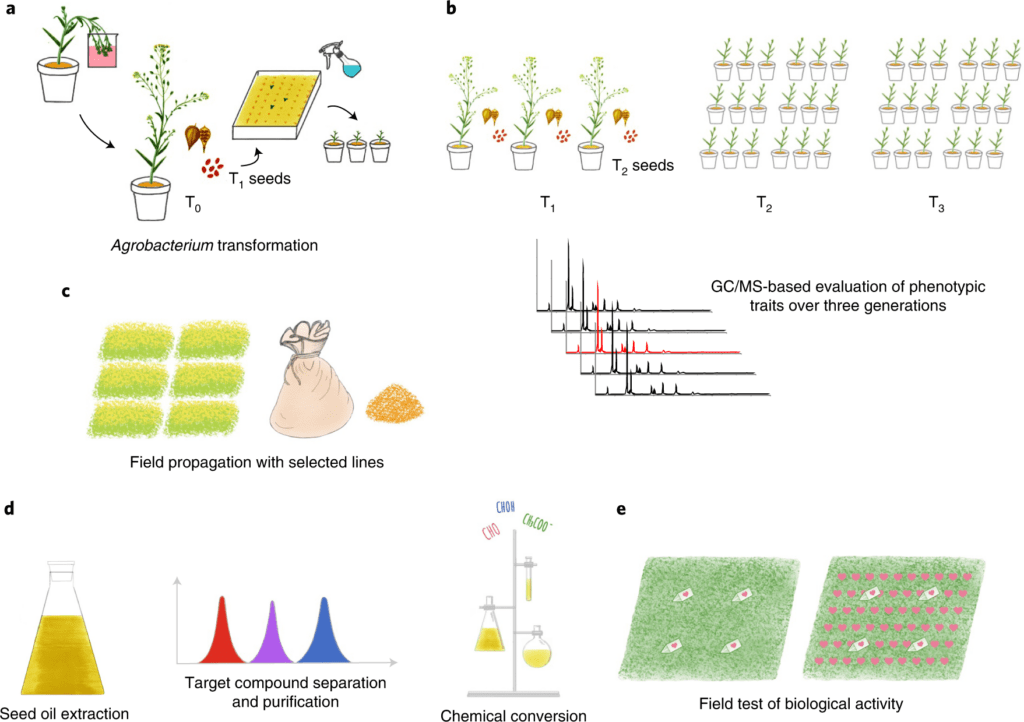
IX. Limitations and Challenges
A. Species Resistance
Some pests may develop resistance to the pheromones used, rendering the control methods less effective over time. This resistance can occur due to genetic variations within a pest population or extended exposure to synthetic pheromones. Continuous monitoring and adaptation of control strategies are necessary to mitigate the risk of species resistance.
B. Cost
While pheromone-based pest control methods offer long-term benefits, they can initially be more costly compared to traditional chemical pesticides. However, the overall cost can be offset by the reduced need for chemical treatments, lower environmental impact, and improved public health outcomes. Many customers find that the long-lasting and sustainable effects of pheromone-based control methods outweigh the upfront costs.
C. Continuous Monitoring
Pheromone-based pest control methods often require continuous monitoring and maintenance to ensure their effectiveness. Pheromone traps and dispensers need to be regularly checked, cleaned, and replaced to maintain their attractiveness. This ongoing effort is necessary to sustain control levels and prevent re-infestations.
X. Future of Pheromone-Based Pest Control
A. Research and Development
Ongoing research and development in the field of pheromone-based pest control hold great promise for the future. Scientists are continually exploring new ways to optimize pheromone formulations, increase their stability and longevity, and expand their applications to a wider range of pest species. The goal is to develop even more effective and environmentally friendly solutions for pest control.
B. Advancements in Pheromone Technology
Advancements in pheromone technology, such as microencapsulation and controlled-release systems, are enhancing the effectiveness and efficiency of pheromone-based pest control methods. These advancements allow for better control of pheromone release rates, prolonging their attractiveness and reducing the frequency of replacement. As technology continues to evolve, pheromone-based pest control will become even more targeted and precise.
C. Integration with Smart Pest Control Systems
The integration of pheromone-based pest control with smart pest control systems holds great potential for the future. By combining the use of pheromone traps and lures with advanced monitoring technologies and data analysis, pest control professionals can optimize control strategies and respond to pest outbreaks in real-time. This integration allows for more efficient and proactive pest management strategies, minimizing the reliance on broad-spectrum pesticides and maximizing sustainability.
In conclusion, pheromones play a crucial role in modern pest control. They offer targeted and sustainable approaches to controlling pest populations, reducing reliance on harmful chemicals. Pheromone-based methods are effective, safe for humans and pets, and contribute to environmental preservation. With ongoing research, advancements in technology, and integration with smart pest control systems, the future of pheromone-based pest control looks promising. By harnessing the power of pheromones, we can continue to develop innovative and eco-friendly solutions to tackle pest-related challenges in our homes, gardens, and agricultural fields.
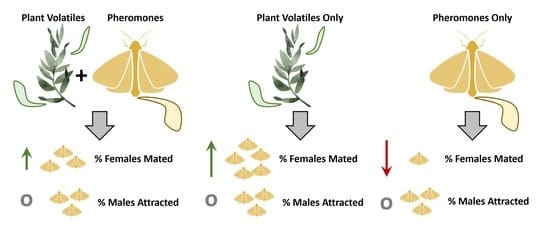

I am Randy, the author behind PestControld.com. Drawing from decades of experience, I aim to provide valuable insights, expert advice, and practical recommendations to help you make informed decisions when assessing viable pest control solutions.